Abstract
1. A method is described for driving the interphalangeal joint of the thumb through repeated sinusoidal flexion—extension movements, while immobilizing other joints of the wrist and hand.
2. The joint met the sinusoidal movement with a force that fluctuated in an approximately sinusoidal manner. This paper is concerned with the relationship between the position and force sinusoids.
3. When the thumb was relaxed the forces were small, but when the flexor pollicis longus was tetanically stimulated there was a large force change in response to each cycle of the movement. In either case, the maximum resistance to extension occurred during the later part of the extension movement, some 20°-45° in advance of maximum extension. A similar result was obtained when the subject exerted a maximal voluntary flexing force.
4. The resistance to movement can conveniently be displayed as a stiffness vector, the amplitude of which is the force/displacement, and the phase is the angle by which the force sinusoid leads the position sinusoid.
5. When the subject maintained a continuous, though sub-maximal, flexing effort the timing of the force fluctuations changed with changing frequency of movement in a characteristic way, and the stiffness vectors described a C-shaped or spiral path. With increasing frequency the stiffness vectors moved round this path in a clockwise direction.
6. For descriptive purposes the resistance to movement can usefully be regarded as the vector sum of a reflex and a non-reflex component. Since the reflex pathway involves significant conduction delays, the reflex force can be expected to appear later in the cycle of a higher frequency movement, and give rise to a vector which moves round in a clockwise direction as the frequency increases. The non-reflex stiffness, however, changes much less with frequency.
7. It is concluded that the size of the C-shaped or spiral vector path gives an indication of the strength of the reflex activity, while the position of the high frequency points gives an indication of the non-reflex resistance to the movement.
Full text
PDF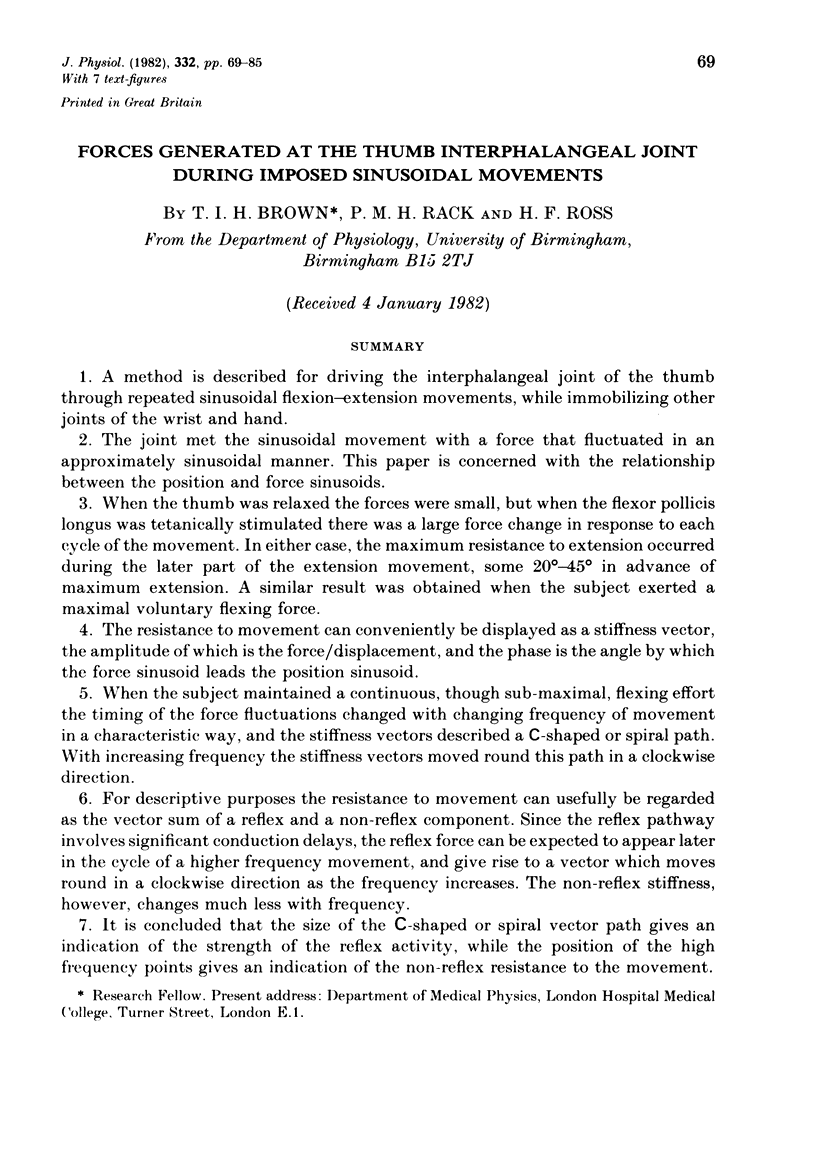
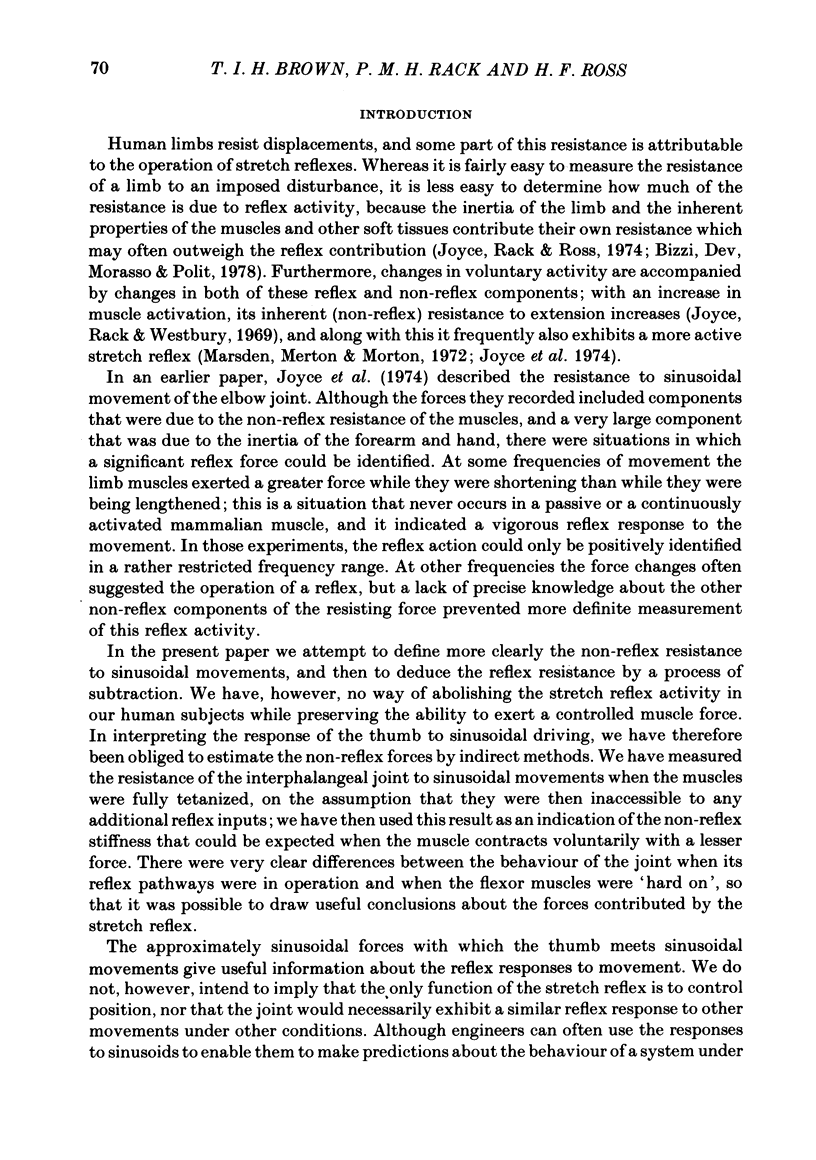
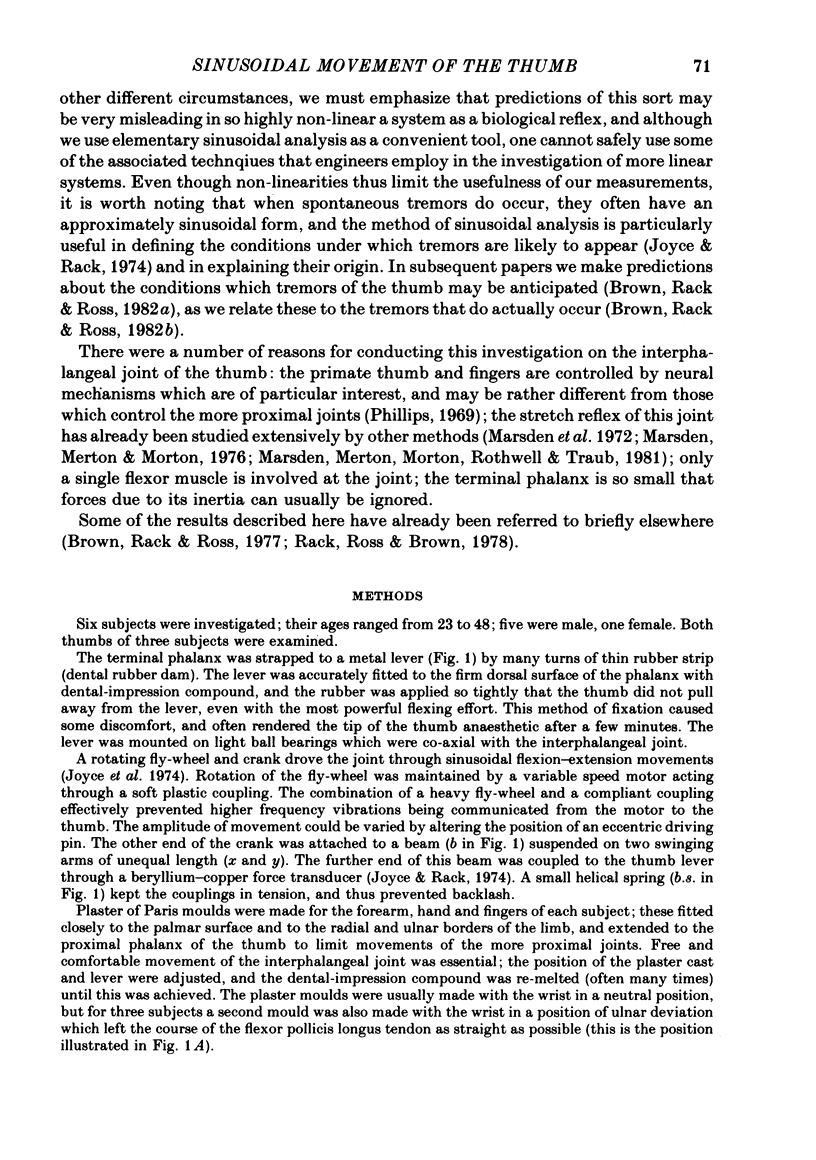
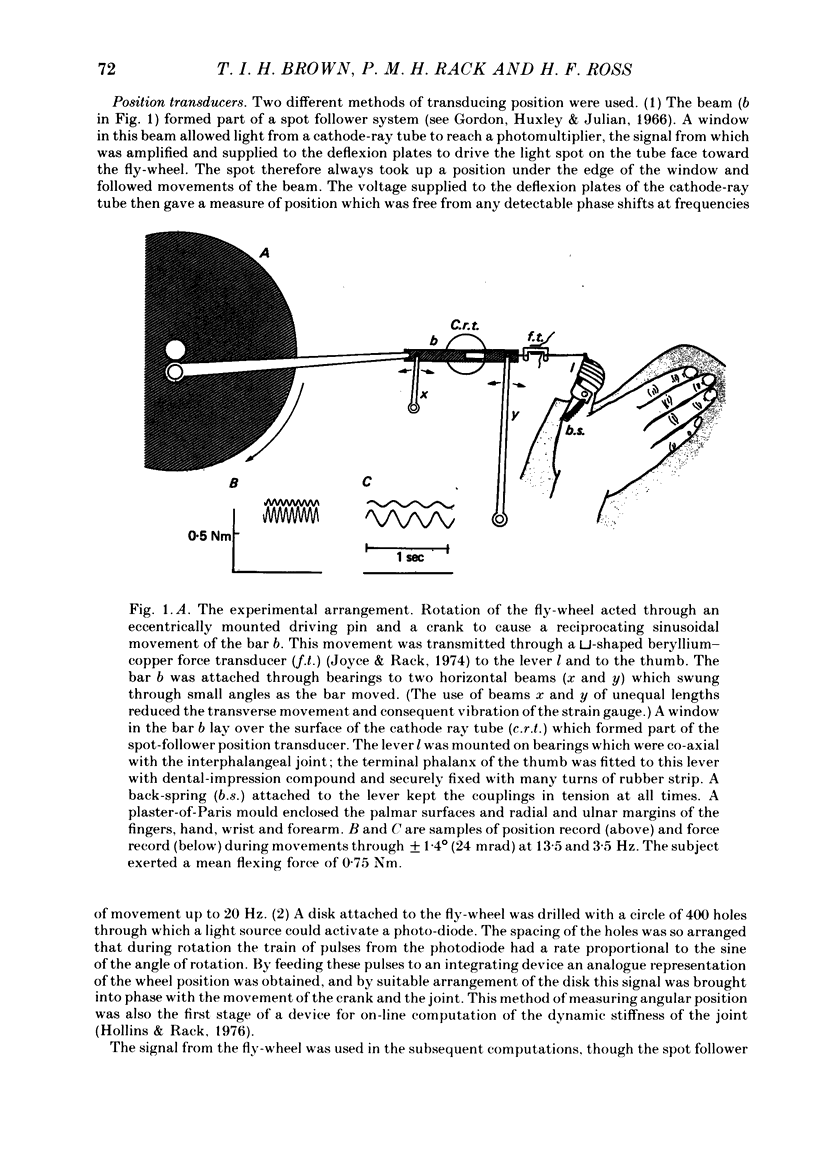
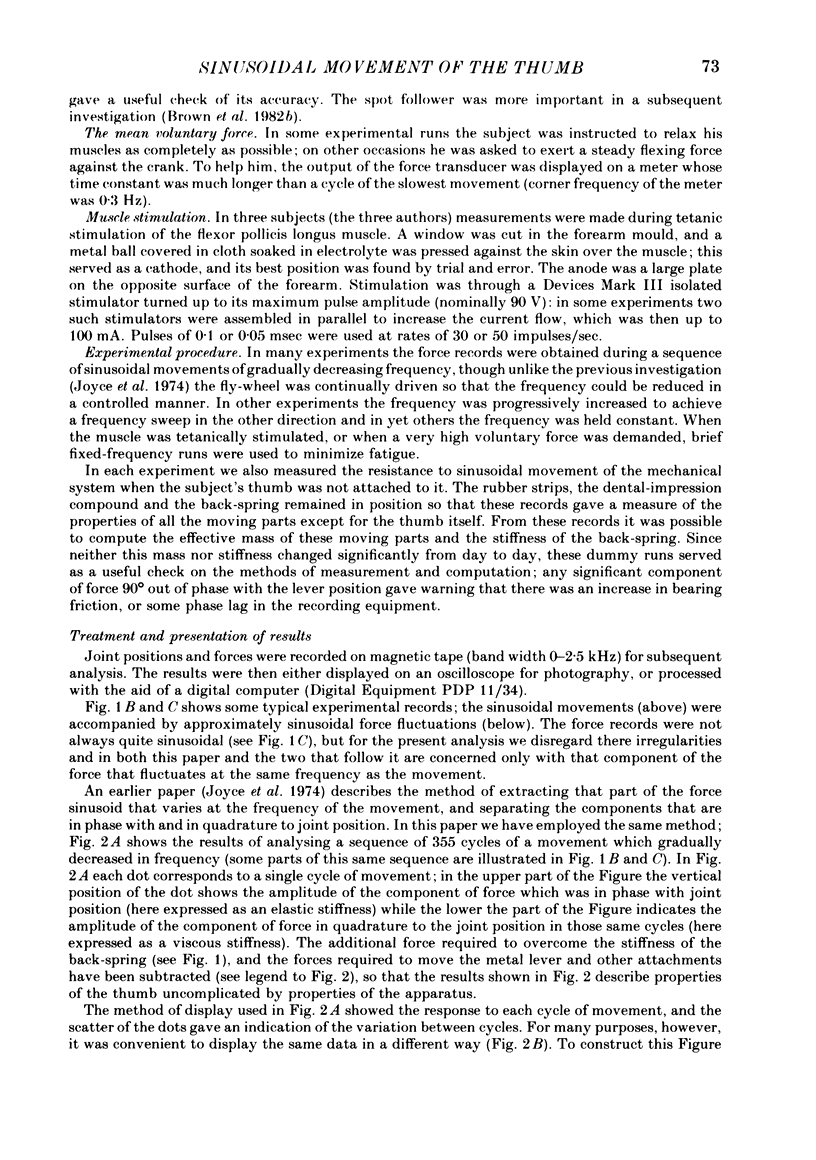
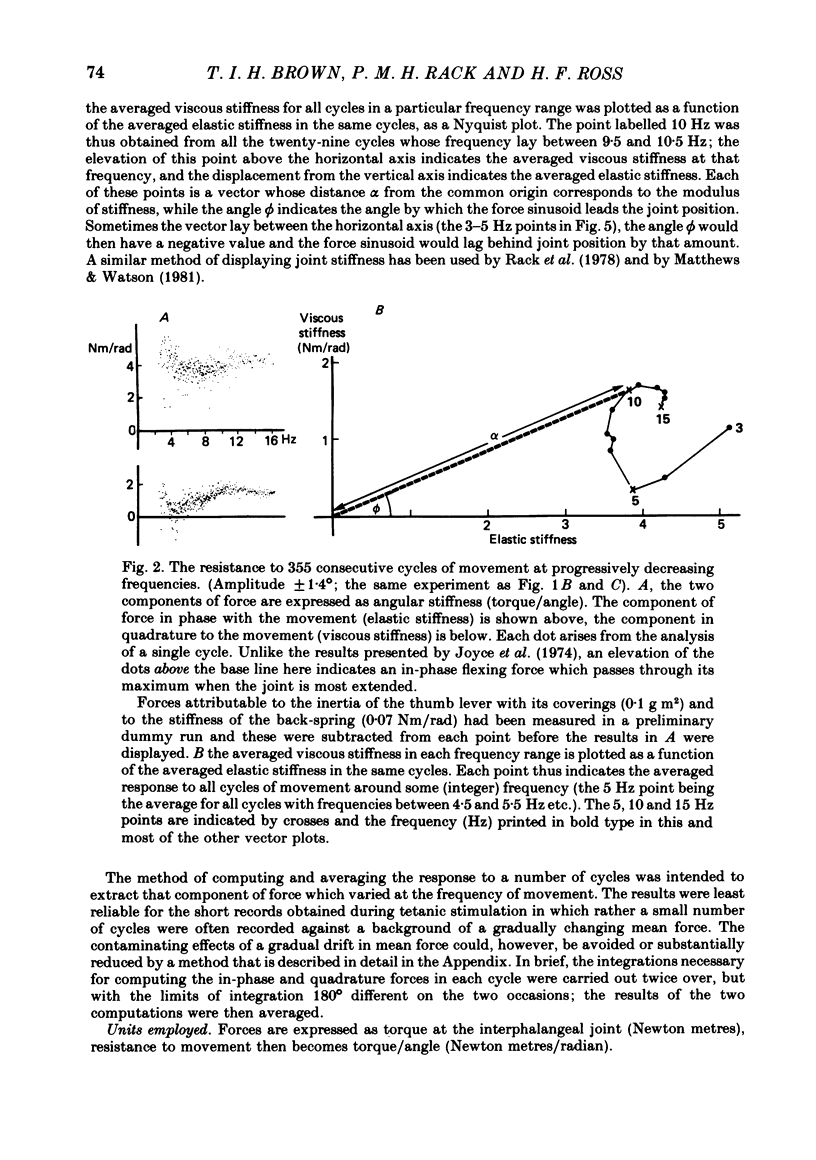
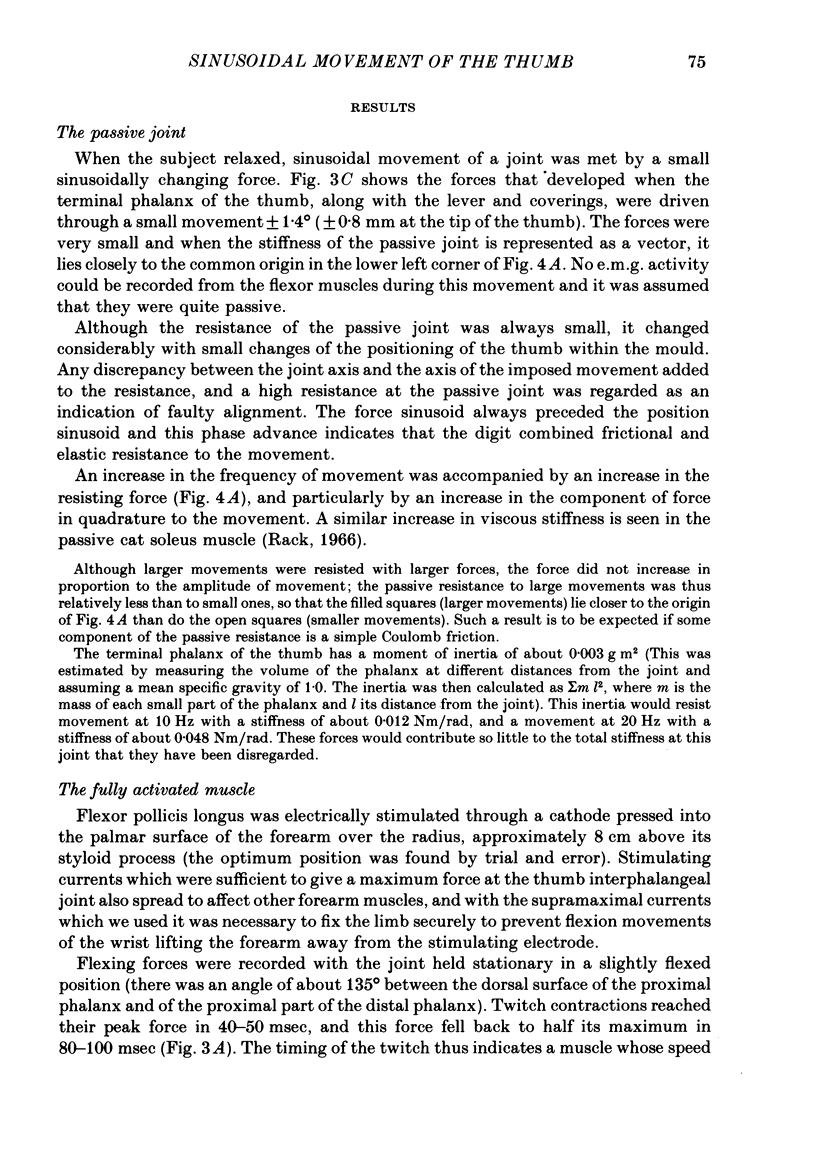
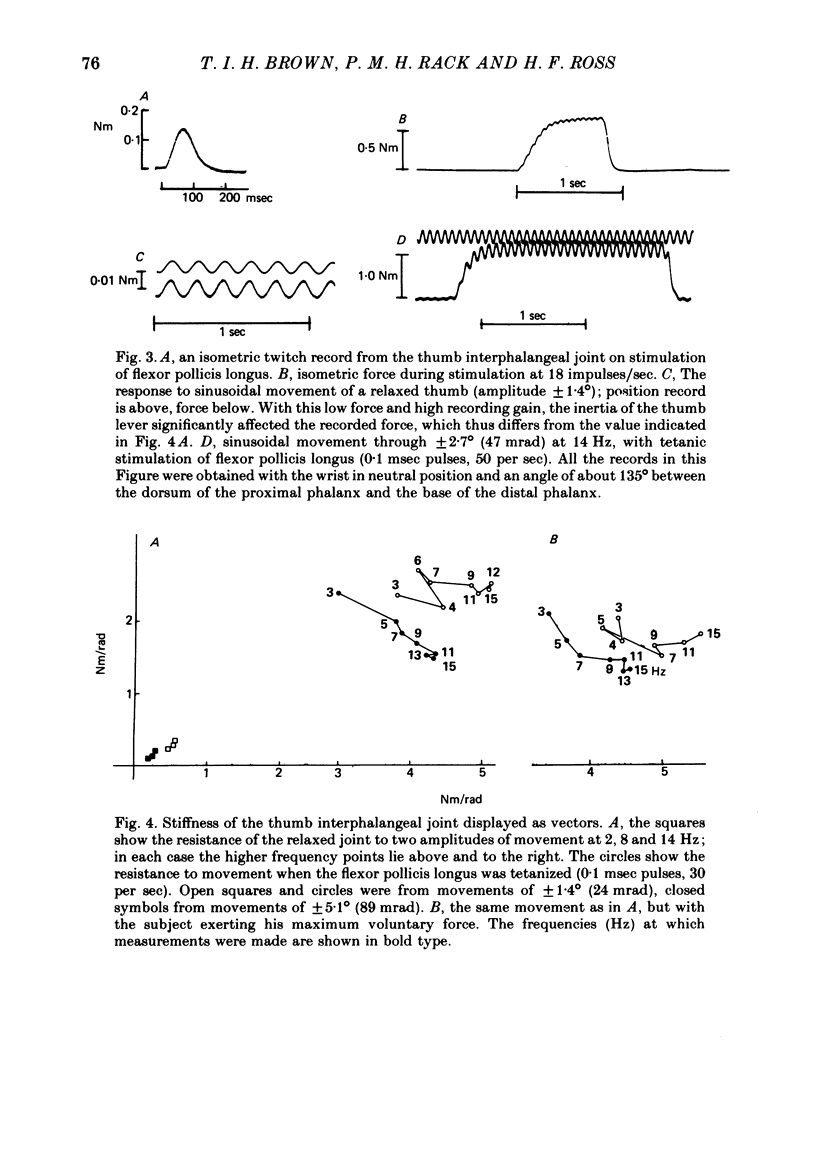
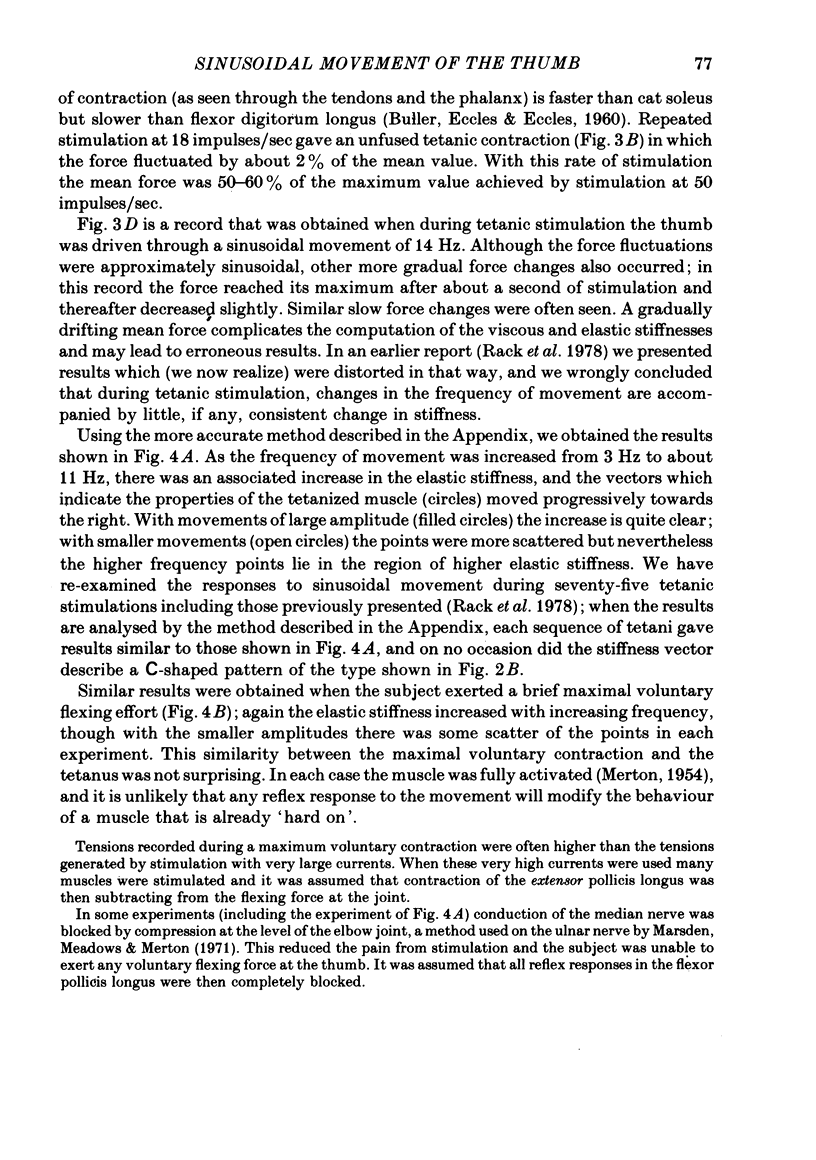
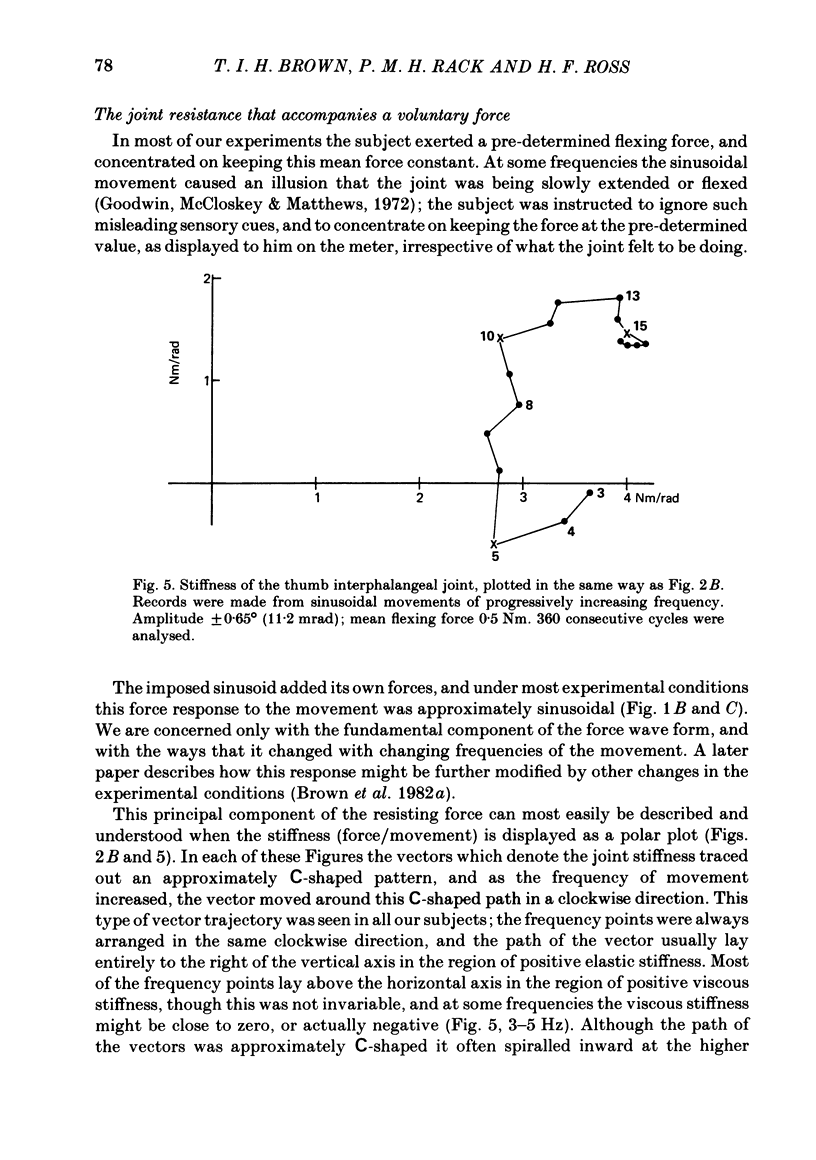
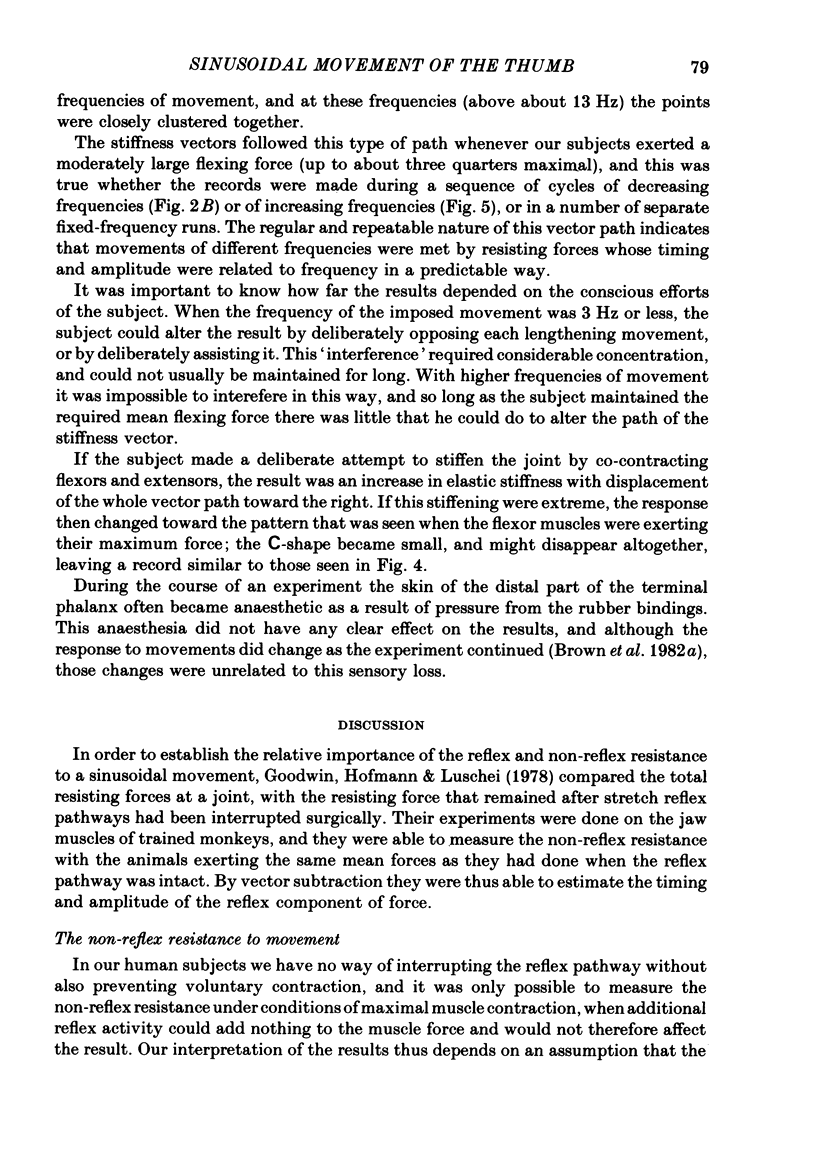
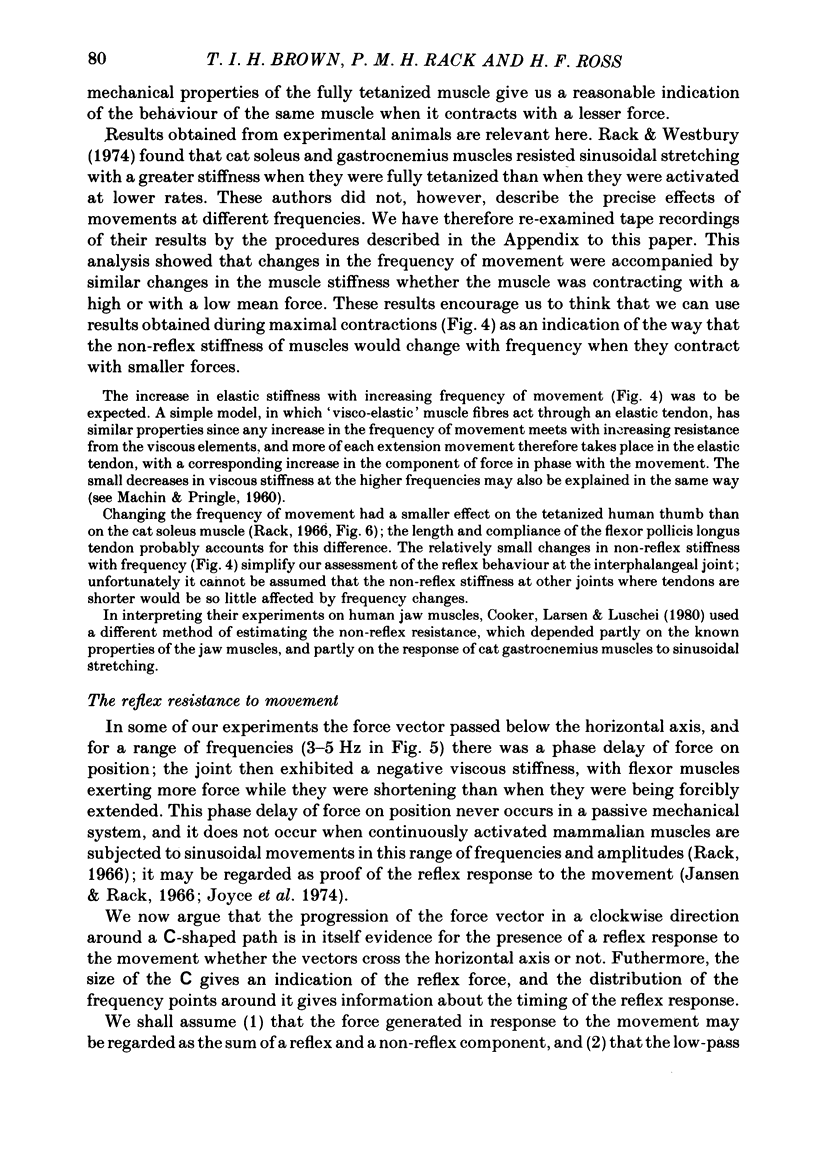
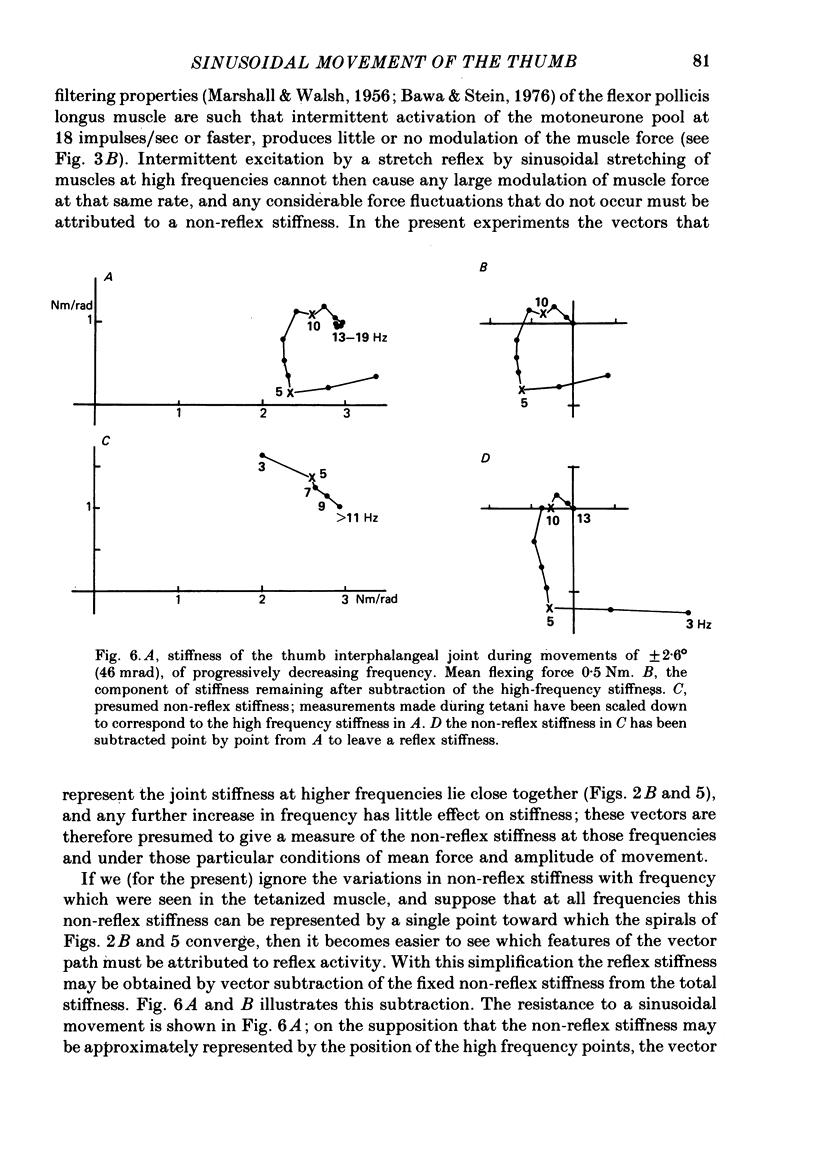
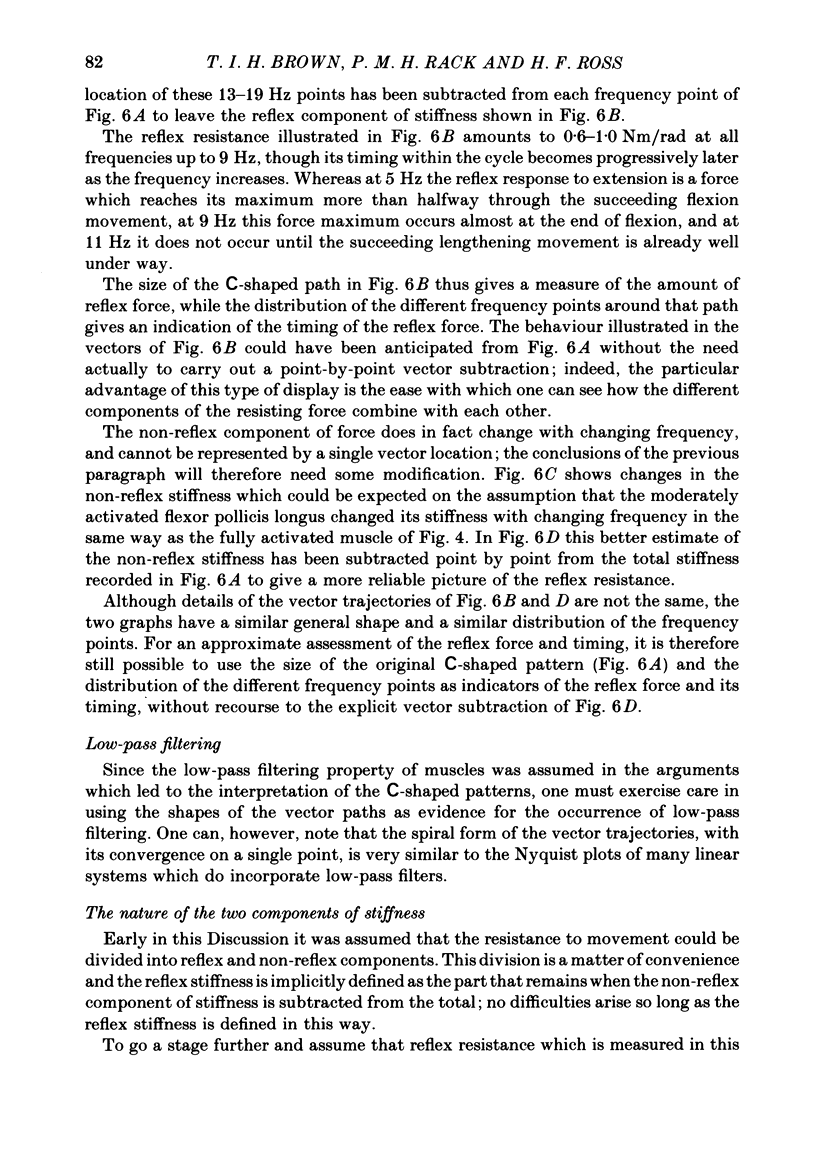
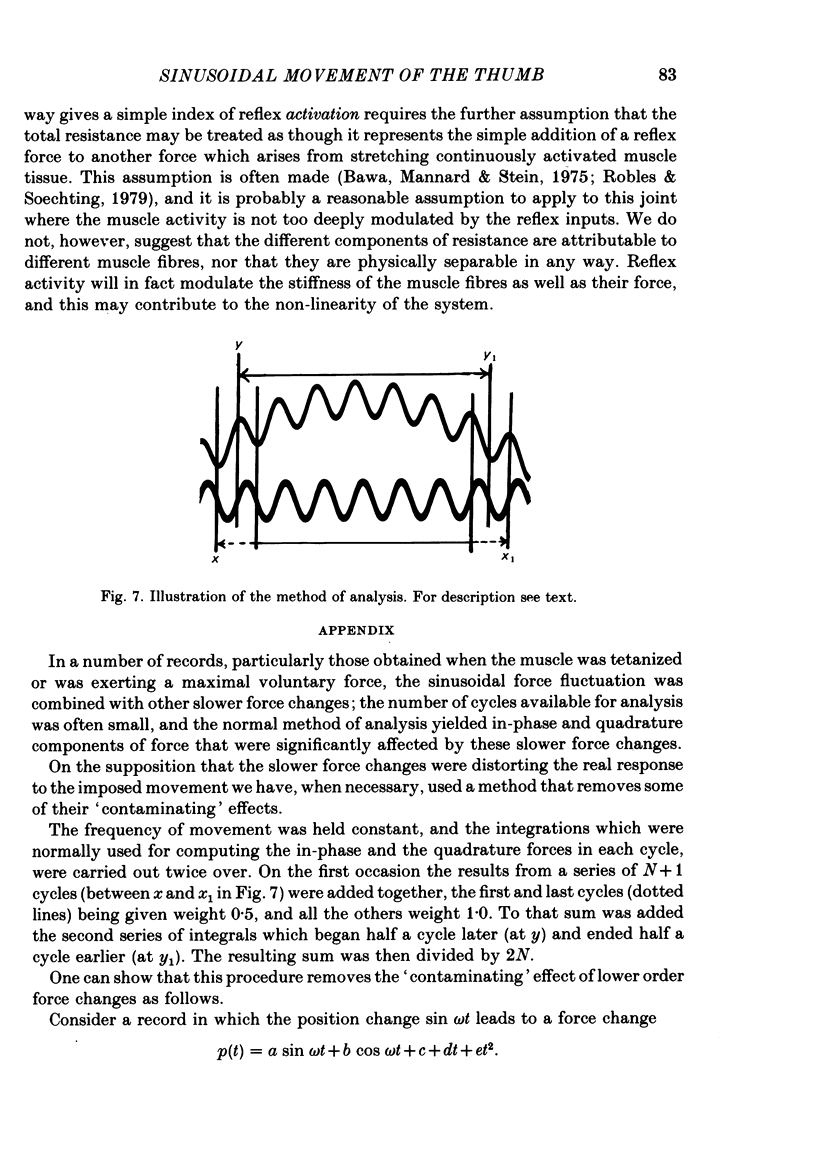
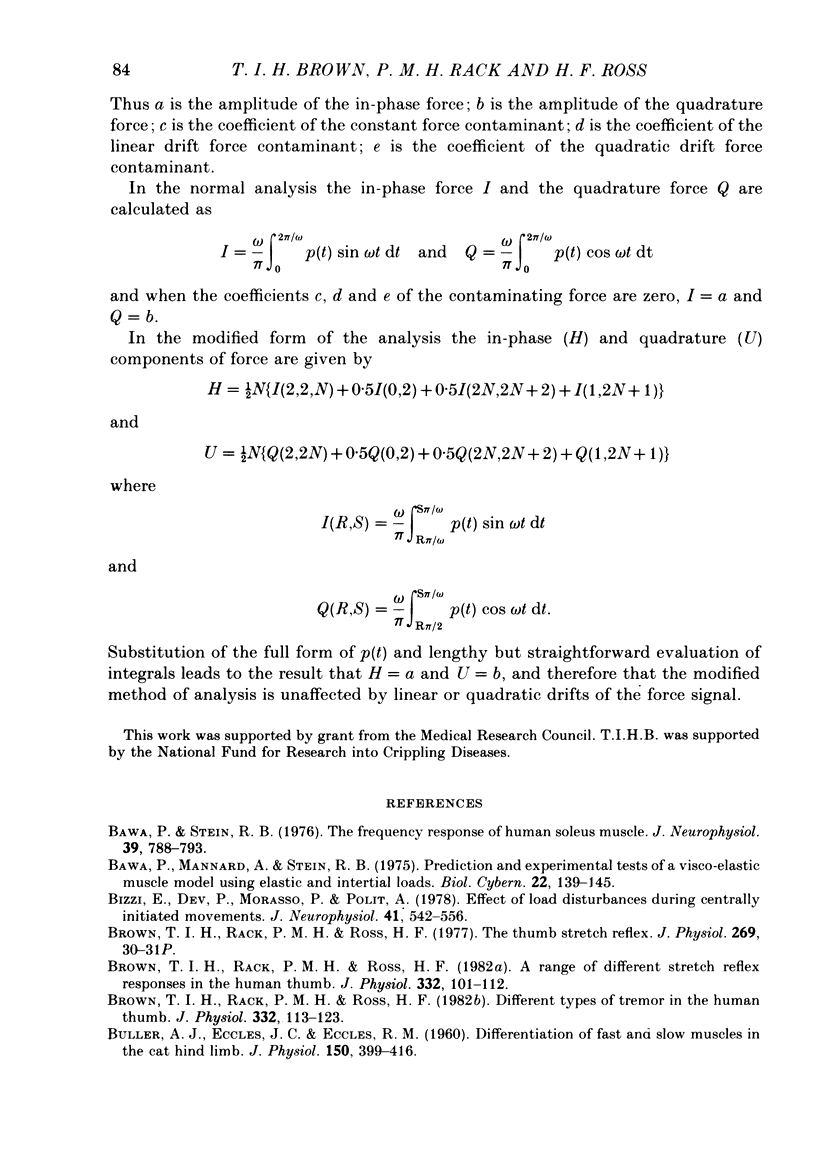
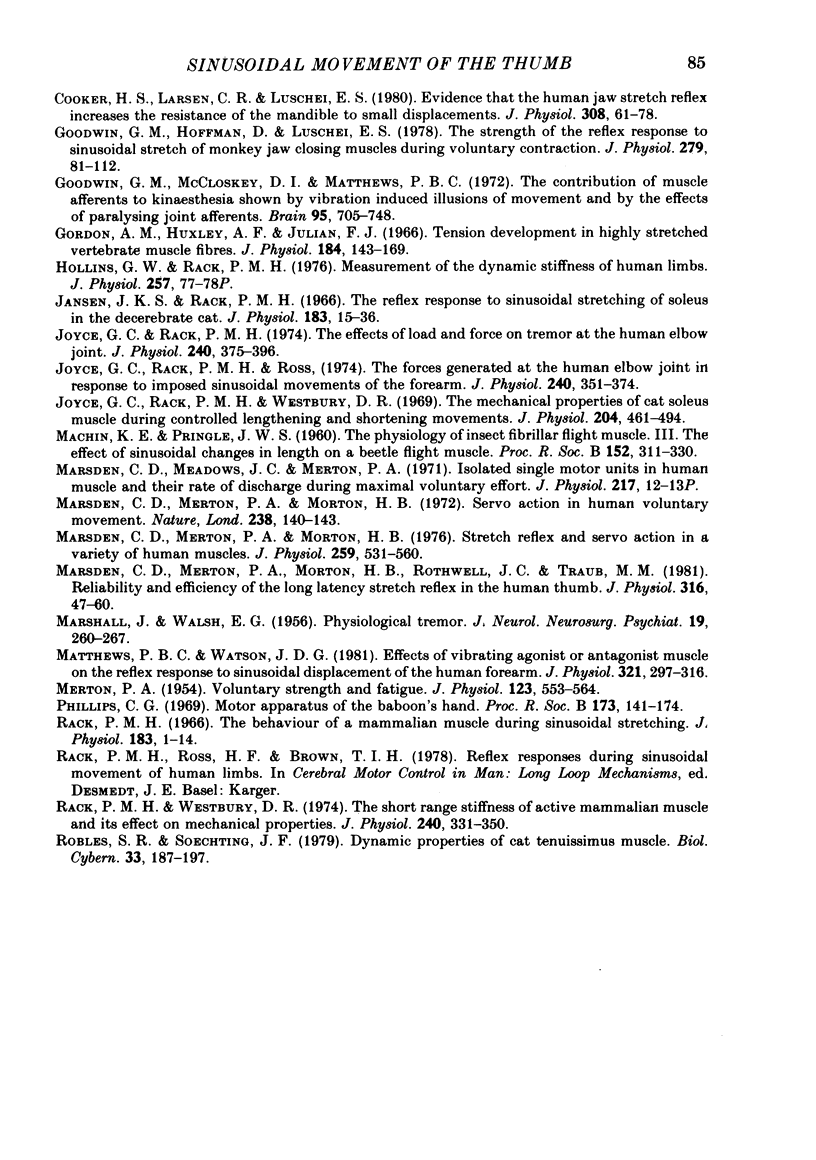
Selected References
These references are in PubMed. This may not be the complete list of references from this article.
- BULLER A. J., ECCLES J. C., ECCLES R. M. Differentiation of fast and slow muscles in the cat hind limb. J Physiol. 1960 Feb;150:399–416. doi: 10.1113/jphysiol.1960.sp006394. [DOI] [PMC free article] [PubMed] [Google Scholar]
- Bawa P., Mannard A., Stein R. B. Predictions and experimental tests of a visco-elastic muscle model using elastic and inertial loads. Biol Cybern. 1976;22(3):139–145. doi: 10.1007/BF00365524. [DOI] [PubMed] [Google Scholar]
- Bawa P., Stein R. B. Frequency response of human soleus muscle. J Neurophysiol. 1976 Jul;39(4):788–793. doi: 10.1152/jn.1976.39.4.788. [DOI] [PubMed] [Google Scholar]
- Bizzi E., Dev P., Morasso P., Polit A. Effect of load disturbances during centrally initiated movements. J Neurophysiol. 1978 May;41(3):542–556. doi: 10.1152/jn.1978.41.3.542. [DOI] [PubMed] [Google Scholar]
- Brown T. I., Rack P. M., Ross H. F. A range of different stretch reflex responses in the human thumb. J Physiol. 1982 Nov;332:101–112. doi: 10.1113/jphysiol.1982.sp014403. [DOI] [PMC free article] [PubMed] [Google Scholar]
- Brown T. I., Rack P. M., Ross H. F. Different types of tremor in the human thumb. J Physiol. 1982 Nov;332:113–123. doi: 10.1113/jphysiol.1982.sp014404. [DOI] [PMC free article] [PubMed] [Google Scholar]
- Brown T. I., Rack P. M., Ross H. F. The thumb stretch reflex [proceedings]. J Physiol. 1977 Jul;269(1):30P–31P. [PubMed] [Google Scholar]
- Cooker H. S., Larson C. R., Luschei E. S. Evidence that the human jaw stretch reflex increases the resistance of the mandible to small displacements. J Physiol. 1980 Nov;308:61–78. doi: 10.1113/jphysiol.1980.sp013462. [DOI] [PMC free article] [PubMed] [Google Scholar]
- Goodwin G. M., Hoffman D., Luschei E. S. The strength of the reflex response to sinusoidal stretch of monkey jaw closing muscles during voluntary contraction. J Physiol. 1978 Jun;279:81–111. doi: 10.1113/jphysiol.1978.sp012332. [DOI] [PMC free article] [PubMed] [Google Scholar]
- Goodwin G. M., McCloskey D. I., Matthews P. B. The contribution of muscle afferents to kinaesthesia shown by vibration induced illusions of movement and by the effects of paralysing joint afferents. Brain. 1972;95(4):705–748. doi: 10.1093/brain/95.4.705. [DOI] [PubMed] [Google Scholar]
- Gordon A. M., Huxley A. F., Julian F. J. Tension development in highly stretched vertebrate muscle fibres. J Physiol. 1966 May;184(1):143–169. doi: 10.1113/jphysiol.1966.sp007908. [DOI] [PMC free article] [PubMed] [Google Scholar]
- Jansen J. K., Rack P. M. The reflex response to sinusoidal stretching of soleus in the decerebrate cat. J Physiol. 1966 Mar;183(1):15–36. doi: 10.1113/jphysiol.1966.sp007849. [DOI] [PMC free article] [PubMed] [Google Scholar]
- Joyce G. C., Rack P. M., Ross H. F. The forces generated at the human elbow joint in response to imposed sinusoidal movements of the forearm. J Physiol. 1974 Jul;240(2):351–374. doi: 10.1113/jphysiol.1974.sp010614. [DOI] [PMC free article] [PubMed] [Google Scholar]
- Joyce G. C., Rack P. M. The effects of load and force on tremor at the normal human elbow joint. J Physiol. 1974 Jul;240(2):375–396. doi: 10.1113/jphysiol.1974.sp010615. [DOI] [PMC free article] [PubMed] [Google Scholar]
- Joyce G. C., Rack P. M., Westbury D. R. The mechanical properties of cat soleus muscle during controlled lengthening and shortening movements. J Physiol. 1969 Oct;204(2):461–474. doi: 10.1113/jphysiol.1969.sp008924. [DOI] [PMC free article] [PubMed] [Google Scholar]
- MACHIN K. E., PRINGLE J. W. The physiology of insect fibrillar muscle. III. The effect of sinusoidal changes of length on a beetle flight muscle. Proc R Soc Lond B Biol Sci. 1960 Jun 14;152:311–330. doi: 10.1098/rspb.1960.0041. [DOI] [PubMed] [Google Scholar]
- MARSHALL J., WALSH E. G. Physiological tremor. J Neurol Neurosurg Psychiatry. 1956 Nov;19(4):260–267. doi: 10.1136/jnnp.19.4.260. [DOI] [PMC free article] [PubMed] [Google Scholar]
- MERTON P. A. Voluntary strength and fatigue. J Physiol. 1954 Mar 29;123(3):553–564. doi: 10.1113/jphysiol.1954.sp005070. [DOI] [PMC free article] [PubMed] [Google Scholar]
- Marsden C. D., Meadows J. C., Merton P. A. Isolated single motor units in human muscle and their rate of discharge during maximal voluntary effort. J Physiol. 1971;217 (Suppl):12P–13P. [PubMed] [Google Scholar]
- Marsden C. D., Merton P. A., Morton H. B., Rothwell J. C., Traub M. M. Reliability and efficacy of the long-latency stretch reflex in the human thumb. J Physiol. 1981 Jul;316:47–60. doi: 10.1113/jphysiol.1981.sp013771. [DOI] [PMC free article] [PubMed] [Google Scholar]
- Marsden C. D., Merton P. A., Morton H. B. Servo action in human voluntary movement. Nature. 1972 Jul 21;238(5360):140–143. doi: 10.1038/238140a0. [DOI] [PubMed] [Google Scholar]
- Marsden C. D., Merton P. A., Morton H. B. Stretch reflex and servo action in a variety of human muscles. J Physiol. 1976 Jul;259(2):531–560. doi: 10.1113/jphysiol.1976.sp011481. [DOI] [PMC free article] [PubMed] [Google Scholar]
- Matthews P. B., Watson J. D. Effect of vibrating agonist or antagonist muscle of the reflex response to sinusoidal displacement of the human forearm. J Physiol. 1981 Dec;321:297–316. doi: 10.1113/jphysiol.1981.sp013985. [DOI] [PMC free article] [PubMed] [Google Scholar]
- Phillips C. G. The Ferrier lecture, 1968. Motor apparatus of the baboon's hand. Proc R Soc Lond B Biol Sci. 1969 May 20;173(1031):141–174. doi: 10.1098/rspb.1969.0044. [DOI] [PubMed] [Google Scholar]
- Rack P. M. The behaviour of a mammalian muscle during sinusoidal stretching. J Physiol. 1966 Mar;183(1):1–14. doi: 10.1113/jphysiol.1966.sp007848. [DOI] [PMC free article] [PubMed] [Google Scholar]
- Rack P. M., Westbury D. R. The short range stiffness of active mammalian muscle and its effect on mechanical properties. J Physiol. 1974 Jul;240(2):331–350. doi: 10.1113/jphysiol.1974.sp010613. [DOI] [PMC free article] [PubMed] [Google Scholar]
- Robles S. S., Soechting J. F. Dynamic properties of cat tenuissimus muscle. Biol Cybern. 1979 Aug;33(4):187–197. doi: 10.1007/BF00337408. [DOI] [PubMed] [Google Scholar]


